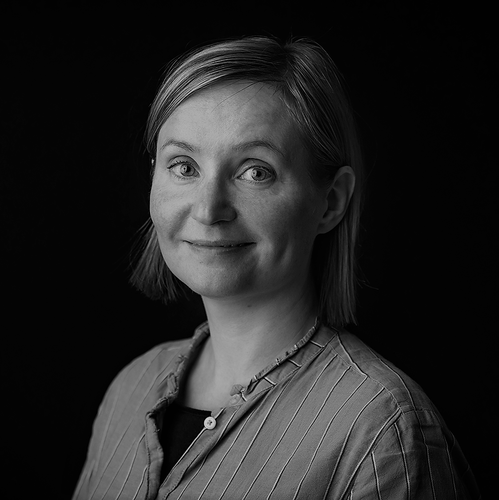Chair
Maaheen Ahmed
Children’s Magazines in Interwar France: Competition, Change and the Role of Comics
Abstract
Through examining French children’s magazines of the interwar period (Fillette and Lisette for girls and Pierrot for boys my talk maps out the possibilities of the many overlooked connections between comics, other image-text combinations and children’s culture, especially the establishment of girl’s culture and boy’s culture and the rise of child consumers.
In selecting publications from the older, highly successful but much vilified Offenstadt press (Fillette) and the more ›respectable‹ Montsouris press that decided to branch out in the 1920s by catering to various members of the family, including children (Lisette and Pierrot), I will examine how the reputations of these presses are confirmed or, in some cases, contested by the magazine’s content. The focus on the interwar years offers a window into a moment of heady magazine activity and change. In addition to the success of magazines tailored to distinctive segments of readers, the advent of Mickey and other American comics in the 1930s confirmed the lasting influence of American popular entertainment on European productions.
In reading the three children’s magazines as snippets of lived, material realities tailored and filtered for children (without falling into the trap of considering them as direct mirrors of reality), my talk also proposes suggestions for reading magazines by interweaving insights from comics studies, children’s culture and periodical studies. If »magazines […] shaped modernity in deep yet still largely unexplored ways«, children’s magazines call for special and close attention through their catering to, and construction of, child readers. Further, the increasing space occupied by the image, especially in comics form, was a sign of the change brought about by modernity. Comics in magazines can therefore be seen as offering a way into understanding the inclinations and transformations of popular print culture.

Maaheen Ahmed
Maaheen Ahmed is an associate professor of comparative literature at Ghent University and principal investigator of COMICS, a five-year multi-researcher project, funded by the European Research Council which seeks to piece together a cultural history of children in European comics.
Monday, 14th June 2021 at 17.00 CEST (UTC+2)
Jana Keck / Mila Oiva / Paul Fyfe
Lajos Kossuth and News Transfer in the International Press System
Abstract
Connected by telegraph wires, letters, railways, steamships, exchange networks, and extensive reprinting practices, newspapers by the mid-nineteenth century seemed to increasingly function as part of the infrastructure of globalization and/or as a distributed information network. Yet scholars of new imperial history have resisted presentist metaphors like »network,« preferring studies of the limiting conditions of the nineteenth-century press. For instance, Simon Potter proposes the concept of an »imperial press system« to better account for its asymmetrical coverage, hierarchies of power, and material infrastructure. This paper emerges from a larger project called Oceanic Exchanges that tries—through computational and comparative methods—to engage nineteenthcentury newspapers as an international system, while also elucidating the particular conditions and structures of power that governed it. This paper offers a glimpse of this »international press system,« as we might call it, in the case of the Hungarian revolutionary Lajos Kossuth (1802- 1894).
In December of 1851, Kossuth traveled through Europe to the United States on a publicity campaign to secure support for Hungarian independence. His voyage down the eastern seaboard, ultimately arriving in Washington, DC, was exhaustively covered by not only the American press but by an increasingly connected system of international newspapers. Newspapers stirred the crowds that flocked to his speeches, inspired far-flung editors to adapt Kossuth’s messages, and allowed Hungarian political operatives to discredit Kossuth and manipulate the news network itself. Kossuth judged his mission a failure (the US declined to get involved), but we suggest that the significance of his trip lies elsewhere. His case study offers an interesting view on the complexities of a globalizing information system, as news propagated through press connections, and different interpretations of the events competed with and complemented each other, locally, regionally, and internationally.

Jana Keck
Jana Keck is a research fellow and coordinator of the research area “Digital History” at the German Historical Institute Washington DC (GHI).

Mila Oiva
Mila Oiva (PhD) is a Cultural Historian, digital humanist and an expert on Russian and Polish history. Dr. Oiva is currently working as a Senior Research Fellow at CUDAN ERA Chair for Cultural Data Analytics and School of Humanities, Tallinn University.

Paul Fyfe
Paul Fyfe is an associate professor at North Carolina State University, serving the English Department and the Communications, Rhetoric and Digital Media (CRDM) PhD program.
Monday, 14th June 2021 at 17.00 CEST (UTC+2)
Will Straw
Moral Panics and Cross-Border Traffic
Abstract
Across a period of at least three decades, volumes bearing the titles Girls on City Streets and Ladies of the Underworld appeared regularly as softcover books, typically the size of U.S. pulp magazines, or as special, dated issues of periodicals. The content of both of these volumes had its origin in attempts by North American publishers to capitalize on moral panics over prostitution and the »traffic in women.« These panics had been flamed in part by the League of Nations investigation of this traffic in the years 1924-26. Materials claiming to document the »traffic in women« were repackaged endlessly over three decades, in mail-order books or as the content of true crime or exposé magazines.
My paper will study the movement of these materials from the U.S. into the output of Canadian publishers in the 1940s, when war-time restrictions on the exportation of Canadian currency resulted in a ban on the direct importation of certain U.S. periodicals, such as true crime magazines, pulps and comic books, into Canada. A number of Canadian publishers emerged, during this period, many of them repackaging U.S. materials in new formats which often confounded the distinct temporalities of book and magazine.
My paper will examine the cross-border passage into Canada of materials exploiting ongoing controversy over the »traffic in women.« Two sorts of traffic will be examined here. One is the »localization« of materials for publication in Canada: materials (typically, narratives of exploitation) were often altered to give them Canadian connections. A second form of traffic is that between the softcover book and periodical. In the endless repackaging of these materials, we find periodical numbers disguised for extended sales periods as books, just as the content of U.S. books was used to fill entire issues of periodicals produced in Canada.
This video was removed in compliance with the author’s preferences.

Will Straw
Will Straw is James McGill Professor of Urban Media Studies at McGill University in Montreal, where he teaches within the Department of Art History and Communications Studies.
Monday, 14th June 2021 at 17.00 CEST (UTC+2)
Discussion
You are invited to discuss the papers in this section in advance of the live Q&A Session using the comment function below. Please make sure to indicate which paper you wish to comment on.


Interesting presentation as always Will. Your mention of the 20th century white slave trade panic has echoes of the 1880s panic over similar issues in Britain that found full expression in W.T. Stead’s famous the Maiden Tribute of Babylon series for the Pall Mall Gazette in 1885, said to have ushered in the crusading aspects of New Journalism that would feature in British papers in period that followed. Stead played a significant role in UK journalism for next 3 decades before his untimely and tragic death on the ill-fated voyage of the Titanic. Will you be linking your general work back to such 19th century antecedents?
David Finkelstein
Dear Will,
Thank you for your interesting and elaborate presentation! I wanted to ask about the division between ‘moral panic’ materials by crusaders and salacious materials. From what I’ve seen in the late 19th century the distinction was not very clear-cut. It seems like in your case, the distinction is clearer: there is a downward percolation from crusaders’ reports, to confessionals, to spicy stories, and from high prestige to low prestige publishing. Where would you draw the line, however? Does moralistic language still turn up in sensationalist accounts, as lurid detail did in ‘official reports’? Or did you perhaps come across any cases of stories travelling the opposite direction? W.T. Stead, after all, had to work with procuresses to develop his story.
Thanks!
Sophie van den Elzen
Thank you, Sophie. You’ve led me to think about this. We can say, I think, that the lurid exploitational and the moralistically reformist elements of these stories are almost all intertwined. The differences, then, have to do with the different markets for which these are destined and the formats they employ. Certainly, a cheap Canadian magazine reprinting stories of Chicago in the 1910s, say, can hardly claim to be engaged in processes of moral reform. The question of stories travelling in the opposite direction is fascinating. It’s sometimes the case, I think, that the sensational publications at the “bottom” of this “downward percolation” (a great phrase) themselves become further evidence of a condition of moral degradation and reference is sometimes made to people reading such literature part of their moral debasement. This is perhaps a minor feature of this movement, but a consistent one.
Thank you, Will. That sounds like a really interesting self-perpetuating dynamic–if the stories from reform campaigners retold in the sensational press perhaps themselves became interpreted as a symptom of general moral degradation. Food for thought!
Thank you, David, for this very pertinent and useful comment. My sense so far is that the scholarship on the 19th century antecedents is already rich and busy, and I’m slightly hesitant to jump into it. There is less, it seems to me, on the “forward” movement of these materials and themes, especially into what I think of as the outer reaches (both geographically and chronologically) of these things. Studying these outer reaches, and the Canadian ones in particular, seems to me the most fruitful contribution I can make myself.
Thank you very much, Jana, Mila, and Paul for your insights! From the map of databases you showed, it seemed like no Austrian database (I’m thinking specifically of ÖNB’s ANNO) was included in your research. Was that a deliberate choice? For it seems to me that Kossuth made a great impact in Austrian periodicals at the time (for obvious reasons).
Maybe the ÖNB/ANNO data is included in the europeana database, which is used? Normally, I don’t use europeana because it provides no advanced search options (at least I can’t find a full-text search)…
But apart from that: fascinating presentation, thanks for that, Paul, Jana, and Mila! I’m especially intrigued by the idea of breaking down the overarching research interest to a specific case so that you can see how news reprinting is framed differently in each of the other print environments. I know that this is probably beyond the resources of even such a large project like Oceanic Exchanges, but it would be fascinating to extend the field of investigation to other types of media and taking processes of remediation into accout!
Hi Nora, yes the database which we were using for OcEx is huge (more than 100 million newspaper pages). Therefore, it is very difficult to decide where and how to start with analyzing reprinting material. And also research interests vary: while others are interested specifically in the routes of texts, others are more interested in the textual differences between reprints. Here is the Europeana’s interface: https://classic.europeana.eu/portal/de/collections/newspapers
Hi Christian. The German-language papers come from Europeana. We have some Austrian papers. Yes, they reported about Kossuth’s mission in the U.S., however, not as extensively and sensationally as, for instance, the U.S. papers. More interestingly, we have found several fake news stories about his family in the Austrian papers. Our project is part of https://oceanicexchanges.org. Here you can find more info about the collections we use: https://www.digitisednewspapers.net.
Many thanks Paul, Jana and Mila for a fascinating discussion of your project. One poignant question I had is whether the algorithm research you conducted also revealed whether Kossuth was compared to other world famous (and travelling) liberators at the time: such as Daniel O’Connell (in previous decades) and Frederick Douglass. Did you find any recurring name combinations in this respect?
Excellent question! Maybe they lacked the cross-linguistic appeal of Kossuth?
Yes great question. For our time frame, we “only” found comparisons to LaFayette, Prometheus, Napoleon III or he is being called a “Black Kossuth”.
Great group presentation, Paul, Jana, and Mila! I was looking forward to hear about results coming out of Oceanic Exchanges!
I was wondering if David’s software would be made available for further research on say, I don’t know, romans-feuilletons travelling internationally? ;- ) Also, did I understand correctly that the software cannot track translations, that it tracks sequences of characters, and therefore only proper nouns across languages?
Hi Marie, thank you! You can find David’s software here: https://github.com/dasmiq/passim. I have no idea if somebody is working on romans-feuilletons. I will let you know if I find out 🙂 To this date, it cannot because as you say it tracks sequences of characters (n-grams). We are experimenting with word embeddings.
Or do you mean the visualizations shown in the presentations?
Thank you, Jana, Mila and Paul, for this great presentation! I found it especially compelling, how you talked about the fact that although Kossuth’s mission was considered a failure in some regard, its significance lied elsewhere. I always found it fascinating how the Hungarian press referred to Kossuth, even going as far as calling him ‘the prophet’ or ‘the Messiah’, so seeing how newspapers in other countries talked about him was really interesting. You mentioned some differences between how American and European papers referred to Kossuth, but was it also different how various European periodicals covered his voyage? You mentioned the censorship in Finland, and obviously the Austrian and Hungarian press would relate to Kossuth differently than any other country. You also talked about Kossuth’s newspapers and his significance regarding the press. Do you believe this affected how newspapers wrote about him and his journey?
Thank you for the great question, Julia! We didn’t see that the newspapers would have treated Kossuth differently because of his background as a newspaper editor. However, this experience certainly helped Kossuth, because he understood how the news distribution system worked. For example, he deliberately distributed his speeches to the newspapers so that they could further amplify his message. For this paper, we mostly looked at the differences in Kossuth news in different geographical areas, but did not explore the differences between newspapers representing different political views. That would be another interesting angle to look at – perhaps as a next step!